Matador Network's Blog, page 1211
November 30, 2018
How to travel abroad safely

A few years back, I was spending the afternoon in a small Caribbean town when I met a teenager who offered to take me down into a nearby canyon.
Was it too risky? No, I thought: I was in good shape, the kid seemed innocent enough, and the canyon was actually pretty small. (I’m not even sure it was technically a canyon.) So I went. Everything was fine, although there was no real path and I struggled mightily on the way back, grabbing onto roots and rocks made slippery in a drizzle.
I had been wrong. It was too risky, but I simply wasn’t aware of the risk. When it rains, flash floods can trap and drown hikers who can’t scramble up the steep sides fast enough.
The biggest danger to travelers is not knowing what’s dangerous. We can all agree that staying out of war zones, avoiding perilously overcrowded ferry boats, and steering clear of Ebola vectors are all good ideas. But what about avoiding destinations that have recently suffered terrorist attacks?
It turns out that won’t do you much good, statistically speaking. You’d be better off going to that same place but renting a bigger car, ignoring a friend’s bad advice, and always carrying a $100 bill in your wallet.
That’s because relatively few tourists die in terrorist attacks. According to the US State Department, which keeps track of how many American civilians are killed abroad, only four died in terrorist attacks from January to June of 2018 (the latest numbers available). And none was a tourist. They all died in the same place on the same day: the Intercontinental Hotel in Kabul, Afghanistan, hardly a popular travel destination.
The most common cause of death in that period was motor vehicle accidents. Eighty-one Americans died everywhere from Australia to Macedonia to Guadalajara, Mexico. The second most common cause of death was drowning: 71 deaths from Iceland to Tel Aviv to Cancun. (It’s not clear whether any were caused by flash floods in a canyon.)
So if you really want to reduce risk, pay a few extra bucks to rent a solid car with a good safety record instead of a flimsy subcompact. Think twice before taking rickety buses over mountain passes with no guard rails. And put on your seat belt even if no one in the entire country uses seat belts. Don’t swim in areas with no lifeguards, and definitely don’t swim in areas with NO SWIMMING signs.
The third most common cause of death for that period were homicides, totaling 63 victims. It’s impossible to tell how many were expats and how many were travelers. But it was certainly more than four. That’s why finding accurate information on crime rates in destinations you’re considering is so important. But many people simply ask friends — or travelers in online forums — if the place seemed safe when they went. Those friends often say, “I was there and nothing happened to me, so you’ll be fine.”
You don’t have to be a probability mastermind to see the flaw in that argument. They might as well have said, “I crossed Times Square blindfolded during rush hour and nothing happened, so you’ll be fine.”
If you do hear a place is known for muggings or street crime, that’s when carrying a $100 bill is worthwhile. For that, and several other surprising strategies, you’ll have to watch the video.
Seth Kugel is the author of Rediscovering Travel: A Guide for the Globally Curious, out this week from Norton. He was formerly the Frugal Traveler columnist for the New York Times. 

More like this: Best destinations for new solo travelers in 2019
The post How to stay safe on the road: Forget terrorism, worry about faulty brakes. appeared first on Matador Network.

How Americans use vacation days
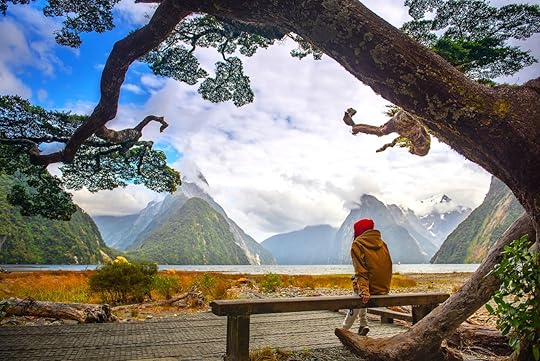
For many Americans, vacation opportunities depend entirely on paid time off (PTO). Many US companies give three weeks of PTO while others only give two, and that means you only have 10-15 days a year to work with. You’d think Americans would be eager to fit in all those epic trips they’ve been fantasizing about at their desks and use PTO to its fullest. Apparently not, according to a new Priceline report.
A whopping 29 percent of Americans said they have regrets about how they used their PTO in 2018. Some are leaving vacation time on the table while others used it to attend weddings, trips home for the holidays, or other obligations that didn’t exactly align with their idea of an ideal trip.
One of the most surprising figures from the Priceline report is that a quarter of Americans will enter the new year with nine unused vacation days. If you’re lucky, those may carry over to 2019. Most likely, however, they’ll just disappear.
“People begin the year expecting to take full advantage of the vacation time they’re given,” said Brett Keller, Priceline’s CEO, “but find themselves scrambling to use those days as December approaches.” Afraid of running out of vacation days too early, it’s entirely possible that people simply save them too long. Better to have them and not need them, than need them and not have them, right?
Well, no. Since one in four Americans express regret about how they spent (or didn’t spend) their PTO, it would suggest that being stingy with vacation time doesn’t exactly pay off. A whopping 59 percent said they plan to make better use of their PTO in 2019. When asked what kind of trip they plan to take, 85 percent expressed the need to get away from their stressful routine and make relaxation a focal point of the trip. So even when Americans are able to pull themselves away from their desks long enough to take a vacation, the makeup of that vacation is largely shaped by the stresses of work and the pressing need to unwind.
Interestingly, one of Americans’ biggest vacation regrets revolves around using PTO for wedding-related events. Destination weddings and bachelor/bachelorette parties can feel like obligations impossible to ignore, and they eat up a huge chunk of PTO. Nineteen percent of Americans said they used their PTO for wedding activities with 41 percent citing it as their top regret. 

More like this: The ultimate packing list for your next solo trip abroad
The post A third of Americans regret how they used their vacation days in 2018, a new survey says appeared first on Matador Network.

Free and cheap activities in NYC
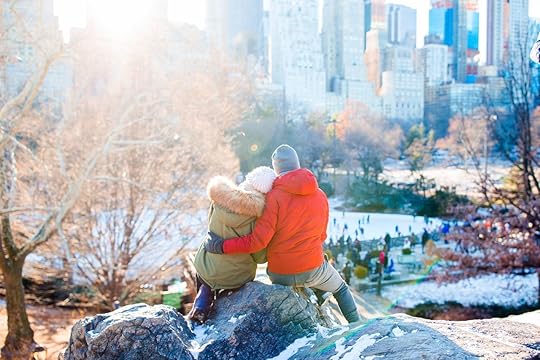
It’s a given that the holiday and winter season is an expensive time of the year, and New York City in itself can get pretty pricey. All the eating, tipping, sightseeing, and shopping quickly adds up. It’s easy to cut back and figure out cheaper alternatives to shopping and eating at fancy places, but the one thing you don’t want to sacrifice are the activities — you came to NYC to experience NYC. Luckily, there are myriad things you can do that still provide an authentic experience without having to shell out the big bucks. From strolling through holiday markets to checking out winter festivals, here are eight free or relatively inexpensive things to do in NYC this winter.
1. See all the Christmas lights on display in Dyker Heights.
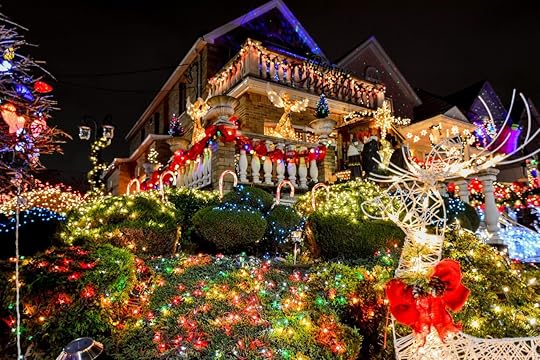
Photo: DiegoMariottini/Shutterstock
Instead of cramming your way through hordes of tourists on 5th Ave to look at holiday displays, head out to Dyker Heights to see local New Yorkers light up the night with dazzling displays of Christmas decorations. In this residential Brooklyn neighborhood, nearly every business and home is decked out in thousands of holidays lights and decorations. It’s so popular that there are even inexpensive tours that take people around the neighborhood to showcase all of the elaborate displays. The best time to visit is after it’s gotten dark out, so you can really see all the lights shine, and they’ll be up from now until January.
2. Hit up the Botanical Garden Holiday Train Show.

Photo: Heather Shimmin/Shutterstock
Most of us either had a family that put up miniature winter village displays or knew someone who did. If you’re visiting NYC during the winter season, you can relive those memories up close and in person at the New York Botanical Garden. Every year, the Botanical Garden hosts its Holiday Train Show, where the garden is set up with an almost half-mile track that over a dozen large-scale model trains chug across. Lining the track are 150 miniature buildings and landmarks that are unique to the Big Apple. Landmarks include Yankee Stadium, Brooklyn Bridge, and the Statue of Liberty, and all are made from natural materials like bark and leaves. Tickets are generally under $25 a pop on weekdays and are more expensive on weekends (but grant you access to the entire Botanical Gardens), so be sure to visit on a weekday if you’d like to save some money. The Holiday Train Show is on from now until January 21, 2019.
3. Celebrate Chinese culture.
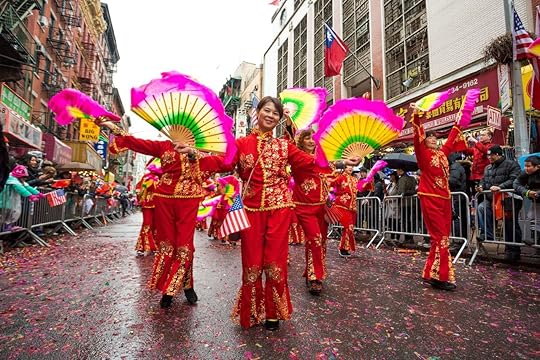
Photo: Photo Spirit/Shutterstock
Chinese New Year in NYC is one of the best winter events to participate in. The date falls on a different day each year, but it’ll be February 5 for 2019. Head down to Chinatown during February and you’ll witness a fantastic celebration of Chinese culture. There’s the Lunar New Year Parade and Festival, which is a huge street party full of people, delicious food and drink, and a parade. Another option is the Firecracker Ceremony and Culture Festival, with fireworks, dragon dances, giveaways, and tons of food vendors.
4. Stroll through the holiday markets.
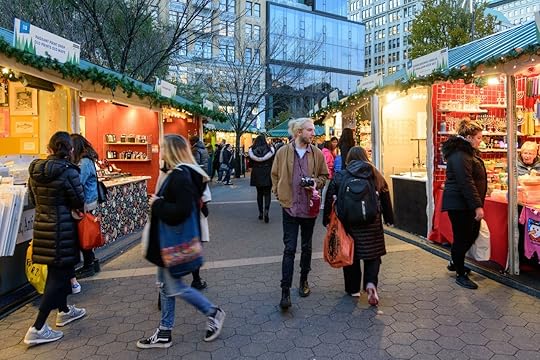
Photo: dnaveh/Shutterstock
There’s no shortage of year-round markets in the five boroughs, but come winter it’s all about the holiday markets. They sell everything from various foods from around the world to crafts to gadgets to clothing and accessories. Prices range from low to high, but even if you don’t plan on buying anything, it’s fun just to walk around and marvel at the variety, picking up a hot apple cider and doughnut along the way. The markets add a special touch to the winter season and signify that the holidays are here.
5. Dress up as Santa and drink all day long.
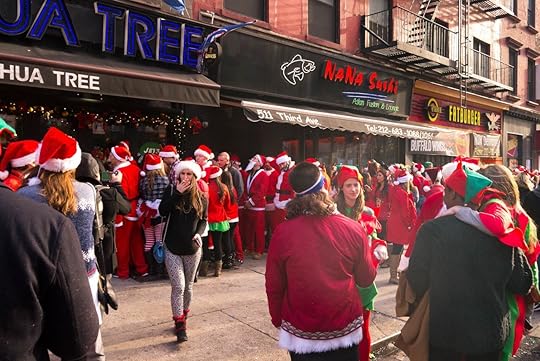
Photo: Donald Bowers Photography/Shutterstock
You may not earn the respect of jaded New Yorkers for participating in this rowdy bar crawl, but there’s no denying that celebrating Santa Con is one of the most fun experiences of the season for anyone that loves to day drink. Once a year every December, crowds of revelers dress up in the stylings of jolly ol’ Saint Nick and go from bar to bar, drinking to their heart’s content thanks to affordable specials. This year, the event is on December 8th and will start at 10:00 AM. Half the fun is not knowing exactly where you’ll end up and following the horde of Santas as the organizers send out updates throughout the day. If you receive the ire of any locals during your crawl, maybe remind them that besides being a day full of red and white debauchery, the event raises money for charity, with all participants being asked to donate $10 to one of Santa Con’s listed charities. If you donate, you’ll receive a Santa badge that’ll allow you priority entrance to all of the venues.
6. Get outdoors.

Photo: TravnikovStudio/Shutterstock
While being outside may not be the first thing you want to do in the winter in NYC, it’s worth the frosty toes. If you’re lucky enough to visit when it snows, you’ll feel the city transformed. It’ll be everything you’ve seen on TV and in movies: bright lights, sound everywhere, and a magical, festive feeling that even the MTA can’t shake. There’s a number of things you can do while still being fiscally responsible, like walking through one of the many parks, sledding, learning how to snowboard, and even ice skate for less than $15 if you’re willing to skip Rockefeller Center in favor of rinks in the outer boroughs.
7. Laugh your way through the night.

Photo: Upright Citizens Brigade Theatre, NY/Facebook
The Upright Citizen’s Brigade is a comedy and improv group with theatres in LA and NYC where people of any skill level can perform or take classes. A number of famous actors and comedians have passed through the UCB walls and make appearances from time to time, with one of the most notable being Amy Poehler, who was one of the founding members and part of the original group. The size of the acts vary: You might be listening to one person for the night or see large groups rotating on and off the stage — it all depends on when you go. Prices are relatively cheap, and you can see a good show for as low as $5, all whilst staying warm indoors.
8. Catch a Broadway show.

Photo: Andriy Blokhin/Shutterstock
Seeing a Broadway show is an iconic NYC experience that everyone should have at least once, and while it isn’t always the cheapest activity around, it doesn’t have to break the bank. Several different options are available to help you avoid paying into the three-digit range, like rushing a show, purchasing day return tickets, and entering a lottery. However, if you don’t want to leave it up to chance or stand outside in the freezing cold this winter, you can guarantee success by looking into Broadway Week. Every winter, for a week straight, people can purchase two-for-one Broadway tickets — that means you buy one, you’ll get a second free. Split the cost of the first ticket, and you’ve brought that $60 Aladdin ticket down to $30 each. It’s usually sometime between January and February, and details will be posted here. 

More like this: 6 best outdoor activities for winter in NYC
The post 8 free or inexpensive things to do in NYC this winter appeared first on Matador Network.

Hitchhiking the Scottish Highlands
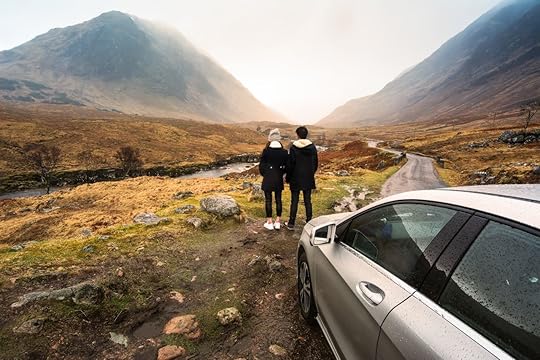
No, really, I’m good at this,” I tell my husband Tom, pushing in front of him to stick out my thumb. The cars rush past on the busy A82, a narrow highway winding through the Scottish Highlands. We are on day six of our 95-mile West Highland Way hike, and we have just walked from Kinlochleven to the Glencoe Valley in the rain. The inn I booked is in the Glencoe Village, about 10 miles down the road.
As we hike down the misty path, the bus pulls away, and there won’t be another for hours. Hitchhiking is our only option.
“Yeah, whatever,” he says, “I’ll give you six cars.”
“And then what?” I say, waving my thumb at passing cars.
“Then I’ll do it.”
The green mountains hunch above us, and the rain becomes a white, steady mist. Peaks appear and disappear behind patchy clouds. I catch myself thinking that this would such a lovely place in the summer. (It’s July.)
“One more car,” Tom says. “Then I’m taking over.”
The next car pulls over, a slate-blue Peugeot, and I do a little joyful jump to celebrate, singing, “You see, you see, you see!”
A very fat, gray-haired man with a red nose is driving. He looks like a garden gnome. “Get in,” he shouts. “Do you want your packs in the back?”
Tom tells him we can carry them on our laps, and I climb in the backseat. Tom opens the driver’s side of the door, and we laugh, remembering everything is opposite in Scotland. We settle into the car, and we’re off. I’m happy I’ll be at our inn soon. I’m wet and cold, and I have to pee. I look around the car. Spilled food splashes the upholstery, and a few sweaters, hats, and an umbrella are scattered about. A plastic bag of something else is on the seat next to me, but I don’t dare sneak a peek. The bundle is about the size of a baby.
Our driver tells us the Scottish always pick up hitchhikers, that they are the friendliest people in the world. We smile and agree. Thank you, we say. I look out the window and think about my hot shower and glass of wine at the inn.
Our driver tells us he lives outside of Glasgow, and I wonder why he’s out here in the Highlands, but I don’t ask. “This,” he says, “is my favorite part of Scotland.”
“There’s the mountain where Skyfall was filmed,” he says. “I’ll take you for a picture.”
How nice!
“That one there?” Tom asks, pointing to a giant roundish mountain with a scoured and craggy top and a skirt of green grass.
“Aye,” the driver nods. It seems like he jerks the wheel a bit, but perhaps he’s just excited about James Bond. We pull over and Tom gets out for a photo. I sit in the back with my pack on my lap, and for a second, I think if we take off without Tom, I’ll be alone in the car with a stranger. I tell myself not to worry — my usual mantra. Even after hiking 19 miles, I could easily outrun this man. I’m a bit chubby myself, but Hugh’s a bean bag in suspenders.
Then I wonder how I’ll get back to Tom after I’ve jumped from the car and run.
Tom gets back in, and the driver says, “Did you get a good one?” Tom looks at his phone and says he thinks so.
“You think that’s good,” our driver says. “Wait until you see the rest.”
The rest?
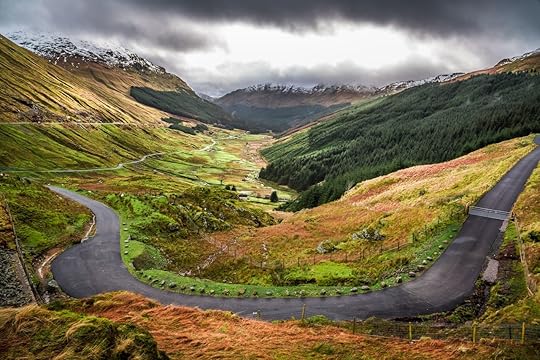
Photo: Shaiith/Shutterstock
We are on a one-lane road alongside a cliff, overlooking a river. I ask, “Is this an alternative scenic route to Glencoe Village?”
“Nope.”
Okie dokie. I’m shivering in my wet shirt, so I take out my puffy jacket and hat and put them on. Tom is Midwestern nice, so he keeps saying, “Wow, thank you so much. This is beautiful,” which is likely prolonging our tour.
And Tom’s right — it is beautiful. The glacier-scraped volcanic cones jut bright green into the patchy blue sky. The sunlight through the clearing clouds makes the grass an electric green. But I’m freezing, and I’m wondering where we’re going. We have pulled over again, and Tom is outside taking a picture of the stream cutting below a glacial moraine.
Without turning around, the driver wags his phone at me and says, “No reception here. No one can get a hold you if they wanted to.”
I smile and nod at him through the rearview mirror. He just means that this place is remote, right? Not that he’s holding us captive and we can’t call for help. I tell myself not to worry. And to enjoy this. That this is the joy of travelling. That the unexpected surprises are why I travel.
Then I remember the plastic bag on the seat next to me. And I wonder what’s in it. I think about the things that would fit into that white bag. An axe? Some knives? A baby?
I decide that if we’re all friends, he won’t try to kill us, so I say, “I’m Suzanne. And this is Tom.”
“Oh yes, I’m Hugh. Hugh MacDonald,” he says.
“Nice to meet you,” we all say. Hugh and Tom shake hands.
Hugh keeps driving, pulling over to avoid oncoming traffic on the narrow road. We wind further into the valley, alongside the bubbling river. Scottish thistle pops purple against the green grass and gray sky. Patches of blue sky appear and vanish over the mountains. This is easily one of the most scenic places I have ever been. I try to enjoy this impromptu tour but have internal fights with myself, as usual.
“I would love to see this in the winter,” I say. “It must be beautiful.”
“Aye,” Hugh says and then throws his phone at me. “Have a look at my photos.”
I scroll through the pictures. The snowy landscape look like something out of a fantasyland.
“These are amazing” I tell him.
“Aye,” he says.
There are also pictures of what look like reindeer, very close up. I wonder if they’re stock photos. We’re in a pull-out again, and Tom gets out and takes pictures of a stone bridge and the mountains beyond.
I give Hugh his phone back. I don’t say anything about the reindeer, but I do ask, “So how long does this road go on? Does it meet up with the main road?”
“The main road? No. It’s a wee way to the car park and then a turn-around. You haven’t seen anything yet.”
I try to just accept it — this tour — but I devise a plan to get away from the car as soon as possible in order to use the natural toilet. I’m thinking about this when Hugh asks, “Are you having a good time, dear?”
“Oh yes,” I say because is there really another answer?
Hugh tells us about the volcanoes, the glaciers, and the avalanche paths. Glacial fans spread at the base of the rocky mountains.
“What time are we meeting Susan and Chris?” I ask Tom. This is a risk. Susan and Chris are friends we met on the trail but we have no plans to meet up; in fact, they are staying up at the Glencoe Lodge, near where we began this tour. I hope Tom gets the clue. That he doesn’t say, “What are you talking about? We aren’t seeing then again until we hike to Kinlochleven.”
But thankfully Tom says, “3:30, I think.”
I look at my watch. It’s now 3:00. I say, “But they might not be there until 4:00. We probably have a little time.” I sit back, feeling satisfied that at least I have a date in an hour. I talk myself into believing Chris and Susan will be there at the lodge. Won’t that be fun, I think.
“There, there,” Hugh shouts. He jerks to the side of the road and reaches for the white plastic bag next to me. Hugh grabs the bag and plops it into Tom’s lap, shouting, “Deer. Feed the deer.”
There are no dead babies. It’s a bag of carrots.
I realize Hugh has driven all this way to feed carrots to the deer. I’m from a place with abundant wildlife and know not to feed them, so I ask, “Feed the deer?”
“Yes,” Hugh insists. “It’s not like we’re feeding them biscuits. That’s not good for deer, but these are carrots!”
I figure Hugh knows more about Scottish deer than I do, so Tom and I approach the fence where three deer graze. Tom throws carrots at the deer. The deer look startled, but then they begin sniffing the air. Tom throws more. “No, no, no,” Hugh says, struggling out of the car and waddling over. “Give me that!” Tom hands over what’s left in the bag. “They’ll smell it, and come to you,” Hugh explains. By then, a white Clydesdale across the field sees what’s happening and gallops toward us. The horse noses over the fence.
We feed the horse carrots, and Hugh is not happy about this. “Don’t give them all to Duncan!” Hugh shouts. We have turned our attention to the wrong ungulates.
“The horse is Duncan?” I ask.
“Aye,” Hugh says and tries to take a carrot from the bag, but he can’t because of his extreme muscle tremors, which I am only now noticing. Parkinson’s, I wonder. Too much drink? I don’t know, but he can’t get the bag open, and Tom tries to help him, but by now, Hugh knows we don’t know what we’re doing when it comes to feeding the Scottish wildlife. The deer come closer though Duncan is hogging all the carrots. Hugh tries to take a carrot out of the bag but spills the rest out on the other side of the fence. I look around, wondering if there’s a place I can go behind a bush and pee. But Hugh says, “Oh well. Take some pictures.” And it’s clear I have missed my opportunity.
Hugh seems disappointed in us. I wonder if he regrets picking us up.

Photo: Elle1/Shutterstock
We get back into Peugeot, and we finally head back toward the highway. “Are you having a good time, dear?” he asks me again, and it’s clear that I’m not grateful enough for this impromptu Highlands tour, so I say, “Oh yes.”
When cars come in the opposite direction, the one closest to a turn-out must back up. We have to do this many times, sometimes backing over the gravel right to the edge of the cliff. I think about Hugh’s tremors, how shaky he is maneuvering the car.
I sometimes can’t stop the stories in my head, and this is the story that comes to me: Hugh loves to feed the deer but because of his medical condition and how very dangerous driving has become, his wife had told him he could go feed the deer this last time. He had to go alone because having anyone else in the car would be too dangerous. She was at home in her Glasgow suburb, wondering if he would go over the cliff this time. And I was wondering the same.
Then I notice the fawn. “A baby,” I say, pointing out the window before realizing that this will surely prolong our tour.
Seeing that we are out of carrots, I wonder what Hugh will do.
Hugh swerves over into a passing place, and tells Tom, “Roll your window down.” He hands Tom a roll of Pollo mints, and says, “Give them to the deer.”
“The mints?” Tom asks.
“Yes,” Hugh says. “Deer love mints.”
Tom holds out a mint, and the fawn approaches the car. Her spotted doe stands back, watching.
“Hiya, Bambi,” Hugh shouts.
“Mints are bad for deer,” I say. “Don’t give that deer Pollo mints.”
But Tom does as Hugh asks, and Hugh’s right: Deer love mints, so much that she’s willing to take the mint from Tom’s hand. Hugh can’t get a picture because of his shaky hands, so he throws me his phone, saying, “Take a picture. And get the doe.”
We drive off again, and I see two more does emerge from the fern, but I don’t say a word. Hugh tells us he sends the photographs to his local paper and sometimes they print them. I tell him I got some good ones for him.
“Deer are my favorite animal,” he says.
I want to tell him that he shouldn’t feed them mints, that mints are worse even than biscuits, but I don’t say anything else.
We drive back to the highway, and Hugh says, “I just have two more spots to take you before I vanish.”
“I have to pee,” I say.
“What?” Hugh says.
“She has to use the toilet,” Tom says.
And it’s 4:00, I think. Time to meet Susan and Chris! But it’s just pretend Susan and Chris. Real Susan and Chris are in their glamping pod, dealing with midges.
“Just a waterfall and a view of the valley,” Hugh says.
We drive through the valley, which is chock-full of camper vans, RVs, and hikers. I hope Hugh doesn’t have a twitch and run into an oncoming car. He pulls over again and instructs us to climb a metal fence, walk 100 meters, and take a picture of the waterfall. We do as we’re told. I tell Tom I really do have to use the bathroom.
When we get in, Tom tells Hugh, “We better hurry. She has to use the toilet.”
“Just one more stop,” Hugh says.
After a while, we pull a u-turn into a small gravel parking place, and now we’re looking back up the U-shaped Glen Coe Valley. The mist drapes over the mountain tops, reflecting in the river. I get out to take one last photograph. Finally, we pull onto the A82 toward our inn.
Hugh drops us off at our inn, we thank him, and I run inside to use the toilet. The drinks at the pub aren’t all that great, and neither is the food. Susan and Chris aren’t really there to tell us stories about their Scottish life, so we sit alone. We leave the pub and go to bed early. I scroll through my pictures, and the last one is the single most beautiful photograph of our three-week trip to Scotland. I think about Hugh, the very real possibility of his loneliness, and how he just wanted to share this with us — the landscape and feeding the deer, his very favorite thing. 

More like this: 12 images that will make you want to explore Scotland right now
The post A wee Scottish tour appeared first on Matador Network.

The food scene in Philly is amazing

It’s dark outside. The sidewalks in the bustling neighborhoods of Philadelphia are starting to fill in with couples and groups of friends walking leisurely and laughing. Soon, they will be squeezing into one of the city’s many cozy dining rooms, or maybe waiting hours for a table at one of Philadelphia’s hot restaurants. Maybe they’ll be seated quickly with a reservation they made weeks, or even months, in advance. There’s no event in town, no special circumstances; it’s a regular Friday night in Philadelphia’s thriving food scene.
People outside of Philly have started to take note. The Los Angeles Times, the New York Times, and other publications have written about how restaurants are reason enough to visit the City of Brotherly Love. Tourists are traveling from New York and DC, curious about the press mentions and interested in getting their own taste of this trendy, foodie haven. Yet, despite the hype over the past couple years, people are still surprised when they see how good Philly’s restaurants really are. While it’s often still referred to as “up and coming,” the truth is that Philadelphia’s food scene is not coming or going. It’s been here, and it’s here to stay.
So what is it about the food, exactly, that keeps critics and eaters on their toes? Sure, there are the hoards of young chefs flocking to the city to compete with others who have already made names for themselves, but there’s more to it than that. Like the city itself, the food scene in Philly is small but tough, the little guy in the corner that keeps getting underestimated yet is undefeated in the ring.
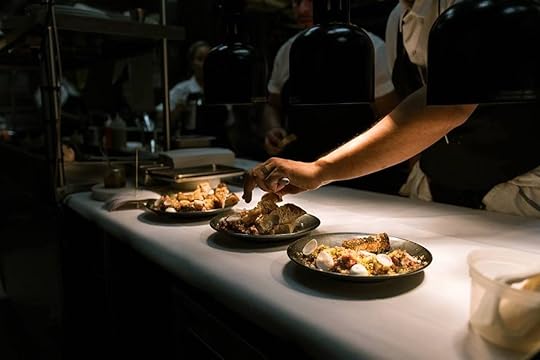
Photo: Friday Saturday Sunday/Facebook
Philadelphia’s food is as globally minded as New York City’s but with more space and without the exorbitantly high cost of doing business. It has food traditions like New Orleans but isn’t so bogged down with how things were done in the past that chefs feel they can’t innovate (see: Middle Child’s Phoagie, a vegan-Vietnamese riff on the cheesesteak).
There may not be any Michelin stars in Philadelphia (yet), but many of the city’s best restaurants aren’t catering to what the Michelin guide tasters want. They’re cooking for real people with real budgets. That’s not to say the food lacks elegance, though. On the contrary, chefs are serving up inventive, gorgeous food that just happens to be affordable in restaurants that are comfortable to be in. Yes, there are plenty of cheesesteaks with Cheese Whiz that drips out of the wrapper with every bite, but there’s so much more.
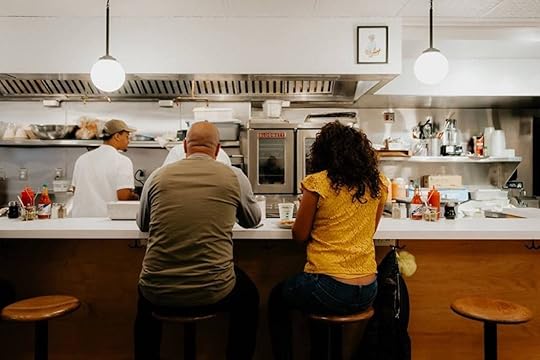
Photo: Middle Child/Facebook
While the good folks over at Michelin may not have noticed, they sure have at the James Beard Foundation. In 2017, Philadelphia restaurants took home three James Beard awards, including those for Outstanding Chef and the Best Chef of the Mid-Atlantic region. The following year, Philly restaurants were nominated 11 times in 8 different categories. Philadelphia’s 2017 winners include Michael Solomonov, who won Outstanding Chef for his work at Zahav, and Greg Vernick, who won Best Mid-Atlantic Chef for Vernick Food & Drink. There’s also Stephen Starr, the restaurateur behind Alma de Cuba, Serpico, Buddakan, and others, who was recognized with the Outstanding Restaurateur award. And the future looks bright. In 2018, Camille Cogswell brought the Rising Star Chef of the Year award to Philly for her work at Zahav.
The best part of eating in Philadelphia, though, is less about the eating and more about a feeling. When you sit down at the best restaurants in the city, there’s a sense of comradery that you’d be hard pressed to find in the big-shot dining rooms of Chicago or Manhattan. Waiters laugh loudly when chatting up their tables, line cooks smile and wink from open kitchens, and bartenders mingle with customers while working on a cocktail that takes five minutes to make. It’s like eating in your friends cozy living room, only if your friend happened to be serving up some of the best food in the country.
Don’t believe us? Try it for yourself.
Friday Saturday Sunday
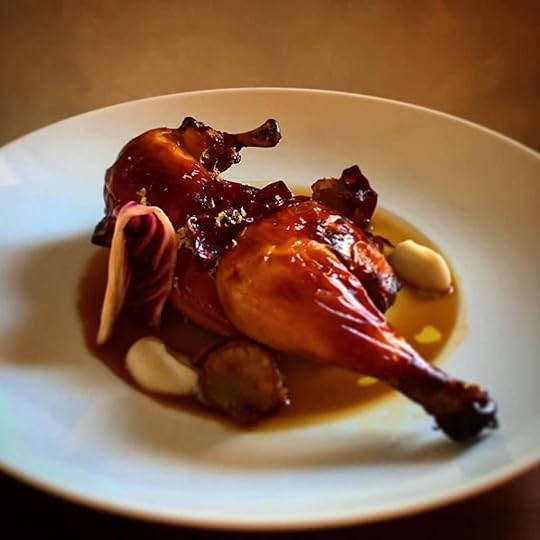
Photo: Friday Saturday Sunday/Facebook
Long loved and recently reopened, Friday Saturday Sunday is a perfect example of the type of restaurants that make Philly, Philly. The plates are small and shareable, served in a romantic candlelit setting. The dining room is coated in wallpaper that feels welcoming, not cheesy, and the plush leather chairs make guests inclined to relax into their lavish meals of raw oysters, bowls of fresh pasta, and perfectly cooked steaks.
Hungry Pigeon

Photo: Hungry Pigeon/Facebook
The Hungry Pigeon is the kind of place where you can expect to wait for a Monday lunch. Despite the wait, there’s a casual cafe vibe. The food is simple, comforting, and made with local ingredients. Don’t mistake that for meaning the food here is boring, though. Try the roasted beet toast for lunch topped with whipped halibut, or the Chicken and Rice for dinner. Most importantly, sample the bread, pastries, and fried chicken that the restaurant is famous for.
South Philly Barbacoa
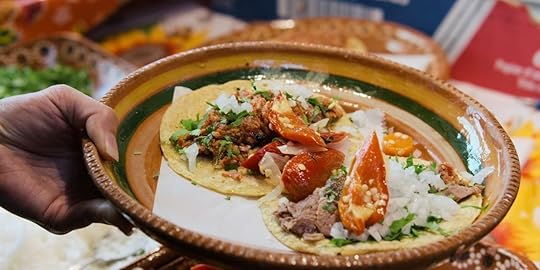
Photo: Chef’s Table, Netflix
It’s relatively impossible to roll up to South Philly Barbacoa and order ever since the tiny Mexican restaurant was featured on Ugly Delicious and Chef’s Table. The line is long but generally friendly and fun. Grab a horchata or a coffee from one of the nearby Italian espresso shops while you wait, and the whole waiting experience starts to feel more like a cafe date than an annoying line. The feature here is the lamb barbacoa, slow cooked from a generations-old recipe. 

More like this: 13 things you’ll get addicted to living in Philadelphia
The post Why we need to stop calling Philly’s food scene ‘up and coming’ appeared first on Matador Network.

Giant teddy bears flood Paris
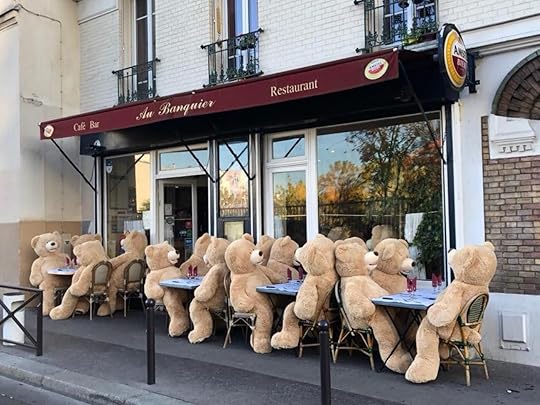
Paris is being invaded by bears. Yes, you read correctly. 50 giant teddy bears, about four feet tall, have descended upon Paris’ Gobelins neighborhood in the 13th arrondissement. The massive bears have been spotted in metro stations, hairdressing salons, cafes, pharmacies, and more. While the identity of the person behind the invasion was initially a mystery, it’s now been revealed that a local bookseller named Philippe is responsible. According to his neighbors, the bookseller’s goal was to use the bears as a means of bringing the neighborhood together. He has been lending them out to residents, who then place them in various places around the neighborhood. The phenomenon even has its own Facebook page, called Les Nounours des Gobelins (the teddy bears of Gobelins), which documents the “invasion.”

Photo: Les nounours des gobelins/Facebook
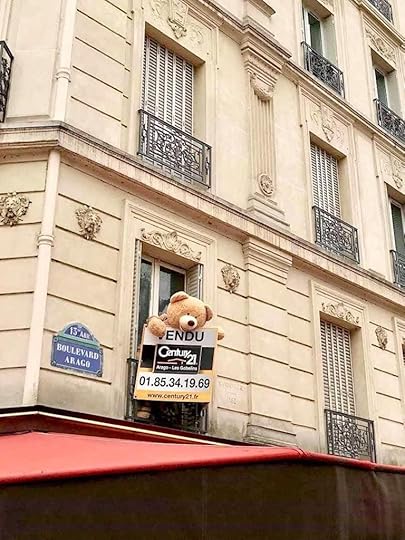
Photo: Les nounours des gobelins/Facebook
Generally only one or two appear at once, but occasionally they show up in groups. On Monday, 37 teddy bears appeared at the Grand Hotel des Gobelins.
According to Philippe, the bears are already doing their part to lift the community’s spirits and bring people together. “I’ve been working here for 25 years,” he told Le Parisien. “There were people I had never spoken to. Now they call me Philippe.”
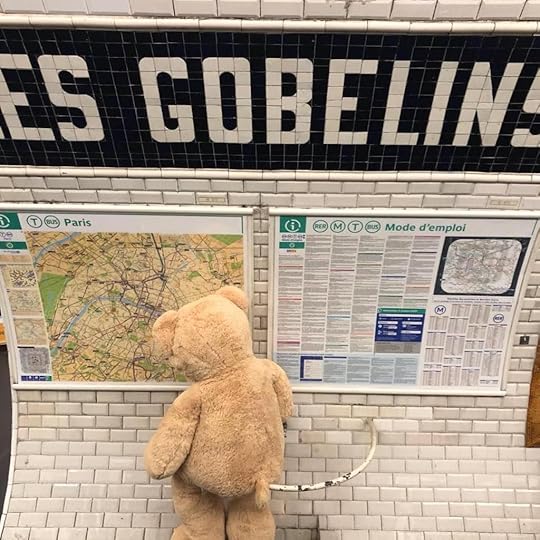
Photo: Les nounours des gobelins/Facebook
If you want to see the invasion before it’s gone, Philippe assures us the bears will be out and about until at least early January. 
H/T: Lonely Planet

More like this: 12 things I wish I knew before visiting Paris
The post 50 giant teddy bears have descended upon Paris appeared first on Matador Network.

Passenger given cup of ice cubes

Budget airlines are well-known for being as skimpy as possible, but this cost-cutting initiative takes the cake. A flight attendant on Singapore-based, budget airline Scoot gave this helpful suggestion to thirsty passenger Gene Goh: Take this cup of ice cubes and wait for them to melt. Since Scoot only offers bottled water for purchase, which the passenger declined, the alternative was a cup of ice cubes.
“I asked for just a cup of plain water,” Goh complained on Scoot’s Facebook page, “but was told by your staff that only bottled water was available for purchase. I was given a cup of ice and was told to wait for the ice to melt.”
He didn’t receive the response he expected. Pointing out the fact that Goh should temper his expectations for a budget airline like Scoot, one commenter wrote, “Dude, budget airline. Got money to go to Osaka, no money to buy water huh? If you want free things don’t travel. Entitled youth.”
Another wrote, “Just a few dollars for a mineral water. Don’t tell me you couldn’t afford it. Stop making yourself cheap…Well done cabin crew!”
Since the flight was in the midst of a delay, however, some did sympathize with Goh’s situation. “Yes, it’s a budget flight,” one commenter said, “but in the event of a delay, the company should shoulder the responsibility of ensuring the minimal welfare of its passengers.”
Lost in the controversy is the fact that airline ice cubes are one of the most unhealthy things you can consume on a plane. According to a study by the Environmental Protection Agency, one in eight planes fails to meet tap water safety standards. 
H/T: Secret Flying

More like this: 7 rights all air passengers have and should know about
The post Plane passenger who asked for water was given a cup of ice cubes and told to wait for them to melt appeared first on Matador Network.

Inflatable Santa lands on UK highway

Santa is cruising through the skies a little early this year in the UK. On Tuesday, an inflatable Santa Claus in someone’s front yard went rogue, and floated onto Cromwell Road in Wisbech, Cambridgeshire. Since the inflatable Santa landed in the middle of the street, it caused quite a traffic jam. Muhammad Fareed, a taxi driver, told BBC News, “It was massive, bigger than my seven-seater car. It was one of the more unusual reasons to be stuck in traffic.” In a normal traffic jam, the taxi driver might have been tempted to lay on the horn, but it’s pretty tough to honk at jolly old St. Nick. So, instead, he took out his phone and captured some pretty hilarious footage.
Giant Santa causes hold ups as he graces Wisbech with his presence
Read more: https://t.co/q1JI4AYDp7 pic.twitter.com/ZACYgcMl07
— ITV News Anglia (@itvanglia) November 27, 2018
“It did raise a smile,” Fareed admitted. By the time he got close to the Santa Claus, however, two men were already dragging it off the road. AA even issued an alert cautioning drivers to beware of “slow traffic due to a large inflatable Santa on B198 Cromwell Road both ways in Wisbech.”
The road has since reopened but, of course, people on Twitter embraced the incident wholeheartedly. 
First HRH The Duchess of Cornwall visits #Wisbech, then Santa! https://t.co/sVr0iMULwK
— Jenny (@jennywhojenny) November 27, 2018
I just love those #Christmas songs. All together now: Santa Claus is coming to town….. and he's holding up traffic on the B198 in Wisbech. https://t.co/p8nTMd6cjf
— Rob Setchell (@RobSetchell) November 27, 2018
H/T: Travel & Leisure

More like this: For an unbeatable winter wonderland holiday, you need to go to Finland
The post Runaway inflatable Santa Claus causes traffic jam in the UK appeared first on Matador Network.

Best places for new solo travelers

Whether you’re flying newly solo or just testing your wings for the first time, traveling alone can be a real treat. Seeing the world at your own pace and discovering the places you’re most interested in, unbeholden to the schedules and whims of others, is a powerful experience. There’s a big world out there, full of beautiful, safe places — not to mention incredible people on similar journeys — just waiting to be discovered. Here are seven of the best destinations for new solo travelers to get their feet wet and catch the solo travel bug.
1. Vietnam
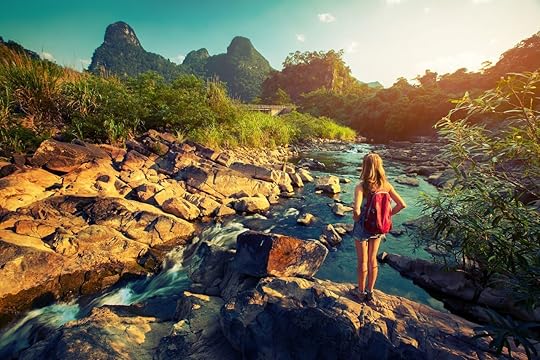
Photo: Dudarev Mikhail/Shutterstock
Vietnam may seem like a far stretch for the first-time solo traveler but its distance shouldn’t be a deterrent. This vibrant country is a regular stop on many a backpacker’s list, which means you will likely run across, and befriend, many other travelers from around the world. People come to Vietnam for its geographic diversity, a mix of cultures, friendly people, and .
It’s relatively easy to get around the country. In cities, it’s just as easy to catch an Uber as it is a tuk-tuk. Hanoi is a preferred spot to begin your travels. It has great shopping, nightlife, and the food scene is exciting enough to have attracted one of popular culture’s most memorable “dates”: Anthony Bourdain and Barack Obama, getting to know each other over steaming bowls of Bun Cha.
From Hanoi, it’s easy to explore the rest of the country. One popular option is traveling east to Ha Long Bay for a cruise through the emerald waters surrounding its famous karst formations. To see the countryside, many choose the train. The old school Reunification Express runs from Hanoi to Ho Chi Minh City, a 30-hour trip through stunning mountain ranges, rice paddies, and beautiful beaches. Another option is booking one of the many personalized tours through the country, such as the 10-day Vietnam Express, which follows the same route but with stops along the way. While petty crime, such as pickpocketing, does exist, if you’re smart and aware of your surroundings, you’ll be fine. Instead, focus on the sights, sounds, and smells of this country and you’ll be glad you made the journey.
2. Chile
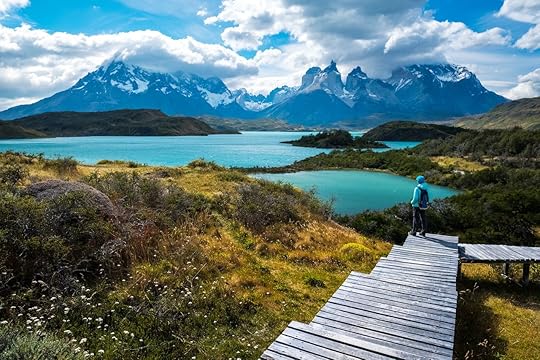
Photo: Dudarev Mikhail/Shutterstock
From the wilds of Patagonia and the Atacama Desert to award-winning wineries and skiing in the Andes, there is something for every kind of traveler in Chile. The lure of such adventures, as well as its reputation for safety, are what make Chile a popular destination for first-time solo travelers. Though it’s a large and long country, it’s relatively easy to get around.
In large cities, such as Santiago, Uber is a standard method of travel and there are plenty of places to see including La Chascona, one of Nobel Prize-winning poet Pablo Neruda’s homes, or the Museo Chileno de Arte Precolombino, widely regarded as one of the best museums in Latin America.
If you want to opt for a more extensive, DIY trip to the north or south, Turbus is a reliable and inexpensive option. Booking an organized tour is also a great way to see all the sights Chile has to offer. Chile has a huge hostel culture and it’s easy to find reasonably priced single rooms, which range from basic to luxe. It’s is a great way to meet fellow travelers so your solo travels in Chile may not last for long.
3. New Zealand
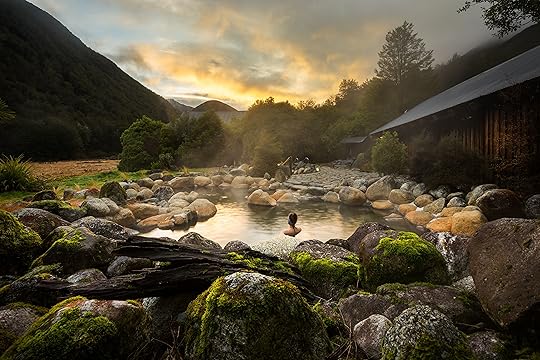
Photo: Naruedom Yaempongsa/Shutterstock
New Zealand attracts solo travelers like ants to sugar. As a whole, the country is safe, affordable, easy to get around, and the locals are “tu meke” — Kiwi slang for “too good.” The most danger a first-time solo traveler is likely to encounter is the kind you signed up for: the rush of an extreme outdoor adventure.
Auckland, on New Zealand’s North Island, provides a good jumping off point for a solo adventurer. It has vibrant nightlife, art galleries, museums, beaches, and hiking. A 35-minute ferry ride from downtown takes wine lovers to Waiheke Island, known as the “island of wine.” Also off the coast lies Rangitoto Island, a dormant volcano with hiking trails and lava tubes. It’s accessible by ferry or by kayak with sunset kayak tours being a popular option. Other adventures include surfing at Piha Beach or bungee jumping from Auckland’s tallest structure, the 1,076-foot Sky Tower.
In town, activities are just a tiny taste of New Zealand’s sights. There are many organized tours for first-time travelers but it’s relatively simple to plan your own as well. Driving tours are very popular and the legendary “backpacker bus” goes just about everywhere — from beach to glacier — and you can hop on and hop off wherever you like. There are no shortages of options: glowworm caves, Lord of the Rings movie locations, glacier hikes, kayaking, and whale watching, just to name a few. With the amount of other first-time or solo travelers sharing a passion for adventure in New Zealand, it’s likely you’ll end up hopping off to places you never expected.
4. Canada

Photo: EB Adventure Photography/Shutterstock
It’s hard to just say, “visit Canada,” because it’s a huge country — the second-largest in the world. Working west to east you have the coiffed British gardens of Vancouver Island and the Asian-influenced adventures of Vancouver, the craggy Rocky Mountains of Banff, the wilderness of Saskatchewan and Manitoba, massive Toronto, gothic Montreal, and rustic Nova Scotia and Prince Edward Island.
Canada is extremely safe as a whole, though in large cities solo travelers will do well to be as attentive about their personal safety as in any other metropolis. Rather than trying to conquer the entire country, a good idea for those traveling on their own for the first time is to pick an area of interest and concentrate travels around it. British Columbia is a great example. Using Vancouver as a home base, it’s easy to hop a ferry to Vancouver Island for whale watching, have high tea at the Empress Hotel, or stop to smell the roses in Butchart Gardens. Vancouver itself is a cacophony of sights and smells. Robson Street is a popular shopping area and a short walk to the culinary adventures of the bustling Chinatown. Lovers of the outdoors won’t want to miss the trails, totem poles, and downtown vistas of Stanley Park.
It’s easy to arrange transport out of the city as well. By car or bus, the Fraser River Valley is popular for river rafting and makes for a great stop on the way to the famous wineries of the Okanagan Valley. With so many sights to see and people to meet along the way, you’ll be so busy you may just forget you’re on your own.
5. Costa Rica

Photo: KikoStock/Shutterstock
Costa Rica is great for a first-time solo traveler: safe, scenic, and well-traveled by other adventurers. Unless you’re specifically looking for solitude, you’re probably going to make friends within minutes of arriving at popular towns such as Montezuma, Tamarindo, Puerto Viejo, and La Fortuna.
Gray Line tour buses are an easy and affordable means to move around the country and, thanks to the influx of solo travelers, affordable single rooms are standard at many Costa Rican hostels.
While many head to the beaches for surf classes, sailing, fishing, and diving, you can arrange tours that head deep into the lush jungle or onto the steaming flanks of the famous Arenal volcano. Other options include visits to sloth sanctuaries, butterfly parks, cloud forests, and even taking inner tube floats down rivers warmed by hot springs. It isn’t what you’ll do in Costa Rica, it’s what you’ll have time to do.
6. Japan

Photo: PR Image Factory/Shutterstock
Plan to arrive with a firm grasp of Japanese customs, and a willingness to learn, and Japan will reveal itself as a truly friendly destination for a first-time traveler. The country prides itself on its orderliness and as such, it’s very safe and easy to get around.
Many visitors begin in Tokyo then work southwest, which is easiest done by booking an organized tour. Tokyo is a city that can take weeks to discover, with its zen gardens, futuristic skyrises, temples, shrines, shopping, and food. If the rush of the city gets too much, Japan Railways can whisk you out of town on a bullet train to more zen spots such as Mount Fuji, dreamy Kyoto, and the beaches of Fukuoka.
Wherever you decide to go, there are some important things to remember. First, bring cash. Many businesses do not take credit or debit cards and ATMs can be unreliable. Second, if you’re a smoker, be aware that Japan has very strict rules about smoking in public and if you break the rules, you could be spending that cash on a hefty fine. Third, if you have tattoos, you may not be allowed inside spa establishments. Tattoos aren’t very socially acceptable in Japan, so if you plan to soak, you may have to pay extra to do so in a private onsen room. If you’re not sure, just ask. The locals want to be sure you enjoy your time in Japan and with a little insight into their culture, you’re sure to do so.
7. Switzerland

Photo: FamVeld/Shutterstock
If you’ve got a fascination with Old World elegance, and a pretty penny to put toward your first solo foray, noble Switzerland is a list-topper. It’s easy to navigate, extremely safe, and has incredible sights, however, it’s one of the most expensive destinations in the world.
In Switzerland, a Big Mac costs around $12. But for solo travelers, the cost may be worth the ease of travel. Though food, accommodations, and fees may be expensive, Switzerland has the densest public transport network in the world. A Swiss Travel Pass allows you to travel across the country by multiple modes, including train, bus, and boat. The pass includes travel on premium panorama trains (advance reservation required), all public transit, free admission to over 500 museums, and 50 percent discount on mountain tours.
This makes it a breeze to take in the breathtaking views of the Matterhorn, stroll the romantic covered bridge at Lake Lucerne, wander the medieval castles of Geneva, peruse modern art in Zurich, or relax in the Mediterranean warmth of Italian-speaking Ticino region. Don’t forget your water bottle because refreshing and safe spring waters gush from public fountains around the country. If you have some money to spare, a solo trip to Switzerland will likely be the most luxurious self-care you’ll ever indulge in. 

More like this: 3 things I learned from 3 months of solo travel
The post Best destinations for new solo travelers in 2019 appeared first on Matador Network.

November 29, 2018
Why you should visit Chile

If you’ve long been curious about South America but haven’t known quite how to tackle the massive continent, the answer is pretty clear-cut. Start with Chile. This skinny country sandwiched between the Andean range and the Pacific Ocean has snowy mountains, beaches, deserts, and forests to wow any onlooker. You can pursue just about any outdoor activity — whether surfing, skiing, hiking, or stargazing — and its urban delights are nothing to sneeze at, either. Here are the many reasons your South American foray should start in Chile.
Chile just works.
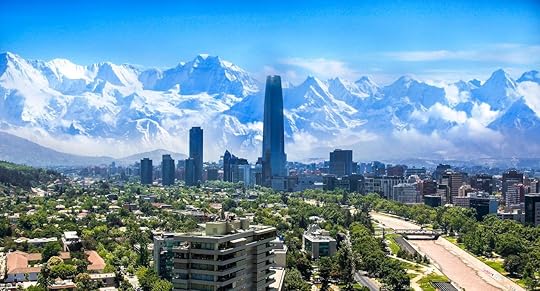
Photo: Marianna Ianovska/Shutterstock
While most South American countries are becoming more reliable places to travel — that is, the buses run on time — this isn’t the case everywhere. Flights get delayed, tour operators show up late, reservations get jumbled. This rarely happens in Chile.
The exception might be if you’re driving the 38 miles from Santiago to Valle Nevado ski resort on a winter day in July, and one of the season’s three big snowstorms hits at that moment. Your short drive could take five hours. Beyond rare cases like that, things run on time. If you’ve only got a week or two for your visit, you’d rather not lose valuable time on preventable delays. In Chile, by and large, you won’t.
Chile also ranks as the safest country in South America. You should still watch for pickpockets in downtown Santiago, but the risk there is like any metropolis. If you’ve been scared off by the violence in places like Brazil’s big cities, you needn’t worry about anything like that in Chile. The country is safe.
Chile is varied.
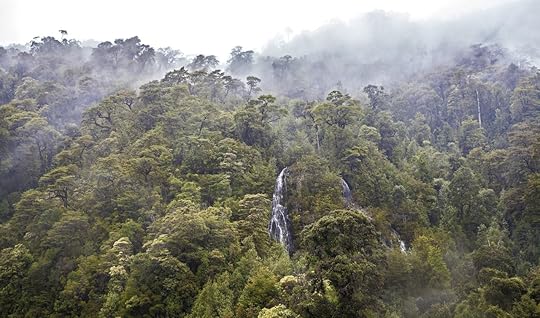
Photo: Maciej Bledowski/Shutterstock
Chile is over 2,600 miles long. Its northern end is only 12 degrees from the equator while its southern end reaches closer to Antarctica than any other place on Earth. In one country, you’ve got a variety of climates and landscapes with stunning scenery that’s hard to replicate any place else. You can explore not just a variety of landscapes but some of the most extreme versions of those places — like one of the world’s few temperate rainforests, the planet’s driest desert, and the highest active volcano on Earth.
If you were hoping to see the tropics, you can even take a long plane flight due east from Santiago and arrive at Rapa Nui, also known as Easter Island. It’s not on the continent, but it’s still part of Chile.
You can pursue multiple outdoors activities on the same trip.
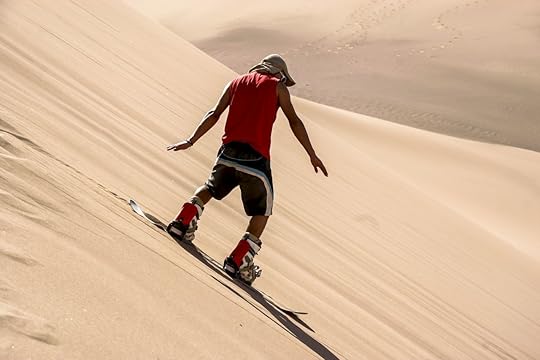
Photo: ErichFend/Shutterstock
Perhaps you’ve been enticed by South America because you want to surf its awesome waves, ski in the middle of (your) summer, ride horses through Patagonia, backpack in pristine wilderness, or even sandboard on massive dunes? You can do all of that in Chile — even on the same trip.
Chile is the only South American country where you could easily ski on Saturday and drive to a surf beach on Sunday. From the Valle Nevado resort, a three-hour drive delivers you to the coast. Granted, surfing in Chile’s winter can be cold, but with a sunny winter day and a good 4/3 wetsuit, it’s no different than surfing in Northern California — which may be the only other place in the world where you can ski on a real mountain and surf excellent waves in the same weekend.
Chile has South America’s first ski resort.

Photo: alexfe/Shutterstock
On the subject of skiing, Chile has some of the best skiing in South America — and the experience of skiing in July or August is one that you shouldn’t pass up. Argentina also has great ski resorts, but they’re a plane flight away from Buenos Aires. In Chile, you can drive to skiing from Santiago. Portillo, the oldest ski resort in all of Latin America, is just two hours by car. La Parva, Valle Nevado, and Lo Barnachea can all be reached in about an hour — barring the aforementioned snowstorm. Plus, you can even use your US Ikon season pass to ski at Valle Nevado.
You’ll pass snow-covered cacti on your way to the resorts, which are all well above the treeline. The toughest thing to get used to, in fact, is the elevation. The peaks of Portillo and La Parva are nearly 11,000 and 12,000 feet, respectively. You’ll get lightheaded at Valle Nevado’s 12,040-foot peak. Fortunately, the high elevation is a bulwark against a warming climate. Head to the mountains from mid-July to early September and you’ll have snow, although the perfect timing is in August when South American kids are back at school after their winter breaks.
Chile has surfing — and stunning beaches from which to watch the surfers.
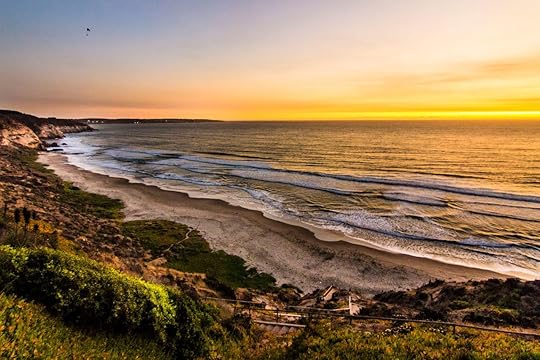
Photo: abriendomundo/Shutterstock
The water may be cold, but with so much coastline and a ferocious current that comes up from Antarctica — and brings with it swells from Arctic storms — you’re bound to find excellent waves in Chile. You can surf at Maitencillo Beach two hours from Santiago or head south to Pichilemu, Chile’s surf capital.
Even if you’re not a surfer, Chile has great beaches to hang out, relax, cold Cerveza Austral in hand, and watch other people navigate the surf. Or you can opt for beaches where the water is calm, a lovely shade of turquoise, and (almost) warm. You can find such beaches in the coastal areas of Atacama.
Unless you’re surfing, you should hit up Chile’s sandy stretches in its warmer months. In November, most seaside restaurants aren’t yet open for the summer season. As of December, beach towns like Cachagua or Reñaca are hopping with eateries, bars, and parties every night — until the school year is back in swing in March.
Chile has Patagonia.
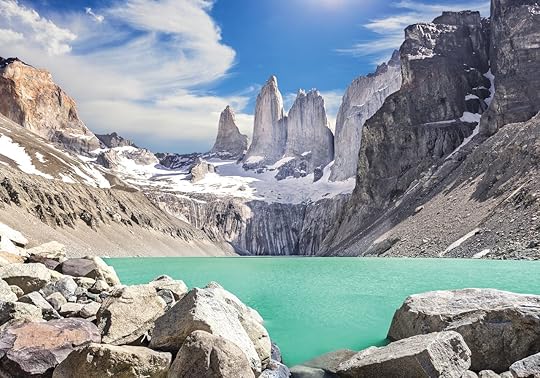
Photo: Maciej Bledowski/Shutterstock
If you do come during Chile’s spring or summer, you can visit one of the most beautiful spots on earth: Patagonia. This impossibly stunning region is, for many, why they first travel to South America — with good reason. Patagonia has snow-capped mountains, jagged peaks, lush forests, massive glaciers, wild horses, graceful guanacos, condors, piercingly blue alpine lakes, iceberg-filled lakes, and even milky green lakes fed by glacial minerals.
Chile shares the vast 400,000 square territory of Patagonian territory with Argentina, and we won’t tell you that should stick to just Chile. Frankly, you should do both. You can even trek from one country to the other. Argentina’s Perito Moreno glacier is a must, and we do recommend a January trip to see it.
But Chile also has the crown jewel of Patagonia: Torres del Paine National Park, which brings together the area’s most incredible features — from soaring peaks to glaciers to lakes in every color of blue — in one place. Chile has also inaugurated its Carretera Austral, or Southern Highway, connecting 17 of its spectacular national parks with one paved road.
Chile has the Atacama Desert.
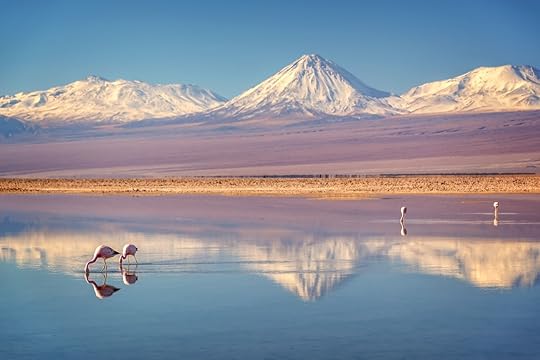
Photo: Delpixel/Shutterstock
The unearthly beauty of the Atacama Desert is just beginning to put it on US travelers’ radars. You can visit this region in northern Chile any time of year. Its high, nearly 8,000-foot altitude keeps it from getting too hot in summer and, even in winter, cold morning temperatures give way to warm afternoons.
Atacama is one of the driest spots on Earth, yet the town of San Pedro de Atacama is an oasis fed by groundwater that seeps down from the storm-battered Andes. Dotted with sturdy carob and chañar trees, San Pedro has drawn young Chileans fleeing the bustle of Santiago. They’ve opened shops and restaurants in white, adobe structures with thatched roofs. The restaurants’ roofs have big holes in the middle, so smoke from blazing indoor fireplaces can escape — since it never, as in never, rains.
In Atacama, massive salt flats have lakes fed by that Andean run-off where flamingos feed on brine shrimp — which give the lanky birds their pinkish hue. Massive sand dunes beg to be scaled, or descended on snowboards. Eerie rock formations can be climbed over or crawled through. You can travel in the predawn hours to an elevation of 14,000 feet to see geysers spew magma-heated water into a deep blue early morning sky.
Chile has dark skies.

Photo: Fotografo de los Andes/Shutterstock
On your 4:00 AM drive to Atacama’s geysers, you’ll be stunned by the night sky, which looks like a dome packed with more stars than you ever thought a sky could hold. As light pollution spreads, dark sky travel has become a travel pursuit of its own. There’s no better place to find that darkness than in Atacama, home to the world’s largest land-based telescope, ALMA.
The area’s remoteness, high altitude, and absolute dryness make for skies free of moisture and other elements that can obscure optical readings. Astronomy tours abound in San Pedro de Atacama, but Chile has observatories closer to Santiago, as well. Given the dryness in much of the country, you’ll find plenty of places to marvel at the heavens once the sun goes down. And if you want to marvel at astronomical wonders when the sun is out, be in Chile on July 2, 2019, when it will lie in the next solar eclipse’s path of totality.
Santiago is buzzing.

Photo: Maciej Bledowski/Shutterstock
If a taste of urban life is what you’re after, you could do worse than spending a couple of days in Santiago. Besides its excellent food, Santiago has bars and shops in its bohemian Bellavista neighborhood or El Barrio Lastarria. You can shop in the newer Vitacura neighborhood, and in Providencia’s El Barrio Italia.
If art and culture are your things, don’t skip the Museo Chileno de Arte Pre-Colombiano, which is not only a fascinating look at the earliest peoples of the Americas, but it’s also housed in a beautifully designed space. The Museo Nacional de Bellas Artes has more traditional works of art while the Museo de Arte Contemporaneo often has excellent modern exhibitions. The CorpArtes Foundation brings in art exhibits likes its current Ai Wei Wei show and musical artists from around the world.
Chile is the home of avocado toast and, maybe, Pisco.

Photo: VDB Photos/Shutterstock
Long before hipsters started mashing avocados onto their gluten-free toast and sprinkling it with sea salt, Chileans were slathering perfectly ripe, creamy avocados onto thick, freshly toasted white bread. Even at tiny, hole-in-the-wall cafes, breakfast options may be limited to toast with butter or toast with avocado. At restaurants, friends start meals by first sharing a platter, or two, of sliced avocados.
What follows those sliced avocados is usually equally tasty. Chile has an incredible bounty of seafood, much of it unavailable outside of the country. Chile’s cuisine is also heavily influenced by Peru — so you can savor ceviche in Santiago that’s as tasty as anything you’ll find in Lima.
While Chile did invent avocado toast, the provenance of its tangy, earthy Pisco liquor is a more open question. We think Pisco may have first been invented in Peru, but they manufacture it in Chile, as well. And like ceviche, Chileans also mix up a mean Pisco Sour. 

More like this: Why Dubai is the best trip to dip your toes in Arab culture
The post Why Chile is the perfect gateway trip to South America appeared first on Matador Network.

Matador Network's Blog
- Matador Network's profile
- 6 followers



